December 2023
Uji is a small city between Kyoto and Nara, two of Japan’s most famous historical and cultural centers. Its proximity to these two former capitals resulted in Uji’s early development as a cultural center. In the Heian era (794-1185), Heian aristocrats maintained country houses in Uji. At the height of the political power of the Fujiwara clan, the Byodoin Temple and Ujigami Shrine, the oldest extant shrine in Japan, were constructed in Uji.
Uji is also famous for its green tea. I was here with my friend Susan for a Matcha tour with Arigato Travel.

The Tale of Genji
The Tale of Genji was written by Lady Murasaki Shikibu about 1010 years ago. It consists of 44 chapters discussing the elegant matters of the Heian Court. The final chapters, titled “Hashi-hime,” are all set in Uji City.

Lady Murasaki Shikibu

Said to have been built by a monk from Nara around 646, Uji Bridge is the main bridge over the Uji River and is considered one of Japan’s three oldest bridges. It has been destroyed and rebuilt many times throughout the years, with the current structure built in 1996.
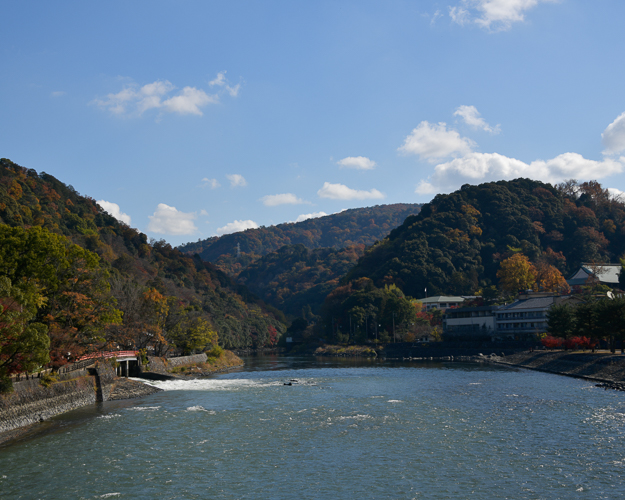
The Uji River
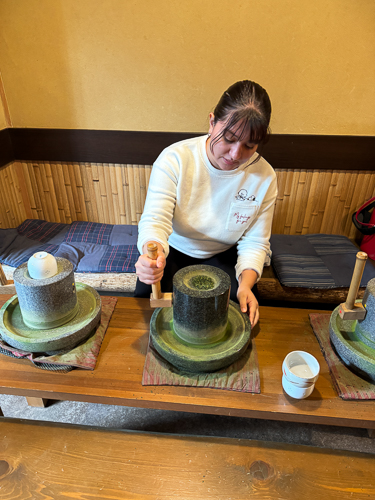
One of our guides grinds matcha in the traditional manner
The introduction of Green Tea dates from the Song Dynasty of China. During this period, Myoan Eisai, a Japanese Buddhist Monk, was staying in China, and upon returning, brought with him the tea seeds.
At the time, the common way to make green tea was to brew the tea leaves. Eisai ground the tea into a powder instead. He called this type of tea the “Elixir of the Immortals. It ingrained itself in Zen Buddhism because of the teas effects on the brain, monks initially drank it to stay awake during meditation.
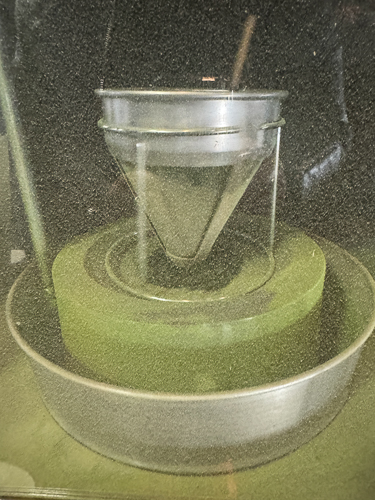
How matcha is ground today
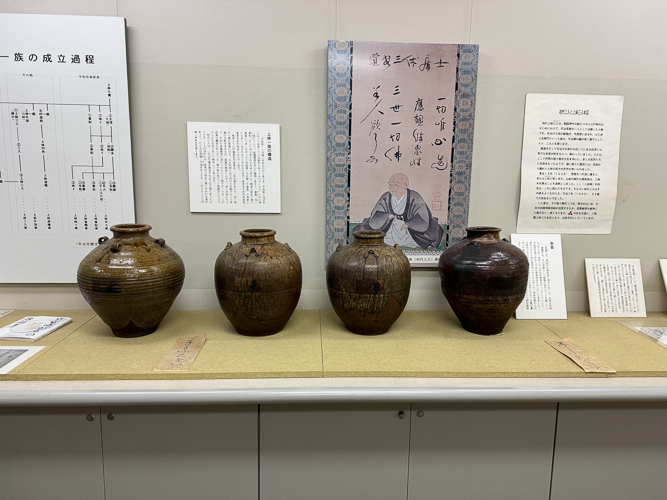
Old tea jars from the Tea shop that gave us our matcha-making experience – Mitsuboshien Kanbayashi Sannyu Honten.
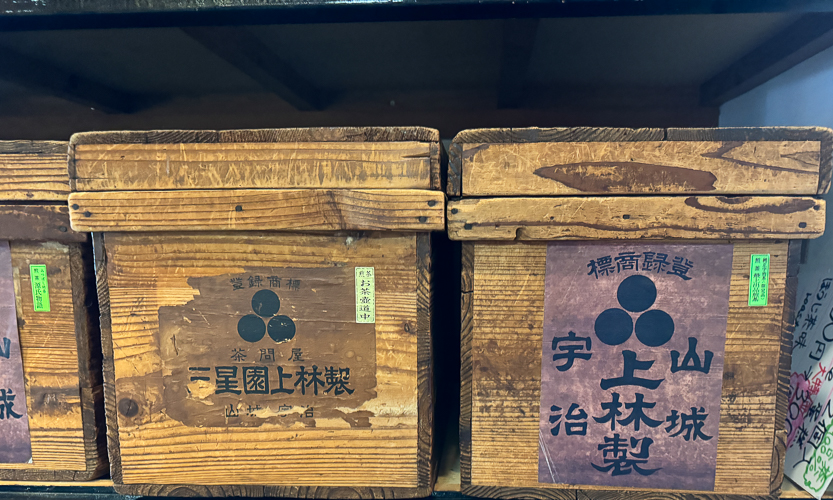
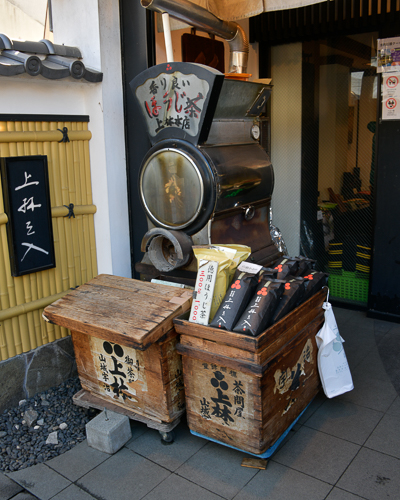
There was hojicha being roasted, and the aroma was intoxicating.
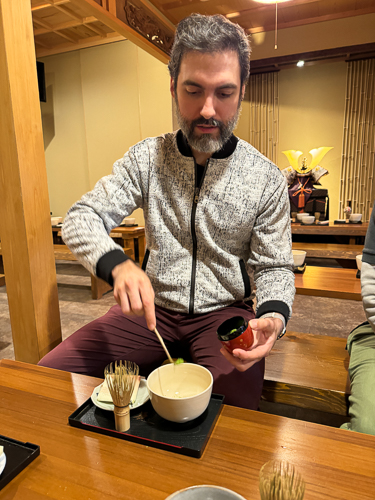
Measuring the Matcha into one’s cup
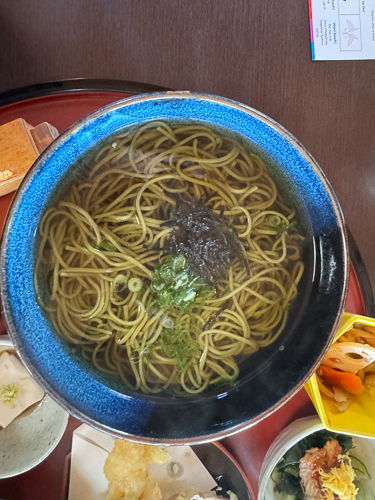
Soba made from matcha is called Cha Soba – Cha is the word for tea. The noodles are made with buckwheat flour and infused with matcha tea.

Matcha dango on the right
We were told by the tea shop owner that more matcha goes into making other products, such as ice cream than is sold as matcha tea.
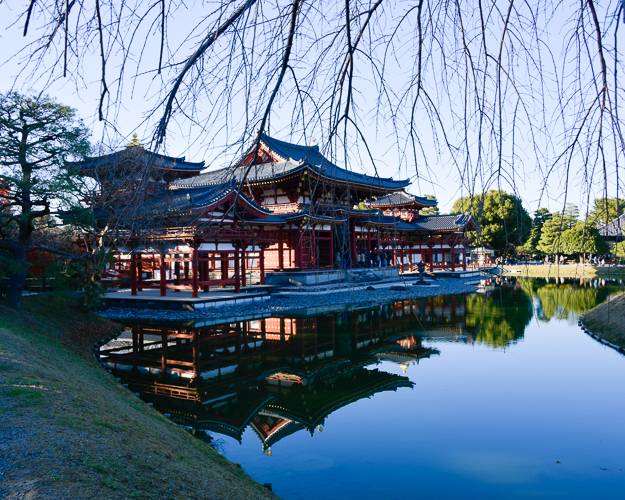
Byodo-In
This temple was initially built in 998 in the Heian period as a rural villa of high-ranking courtier Minamoto no Shigenobu. After he died, one of the most powerful members of the Fujiwara clan, Fujiwara no Michinaga, purchased the property from the courtier’s widow. The villa was made into a Buddhist temple by his son Fujiwara no Yorimichi in 1052. Byodo-in is a UNESCO World Heritage site.

Ujigami
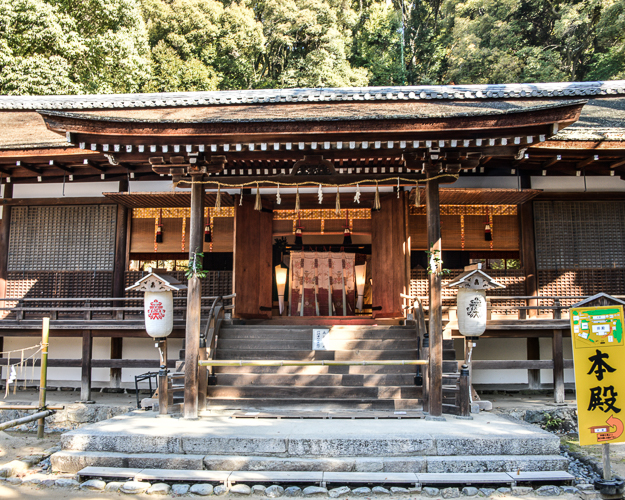
The Ujigami Shrine is a Shinto shrine built as a guardian shrine for Byōdō-in. It, too, is a UNESCO World Heritage Site.
Ujigami Shrine is dedicated to the mythical Emperor Ojin and his sons, Uji no Wakiiratsuko and the Emperor Nintoku. The trio are classed as legendary, mentioned in the Kojiki (Japan’s oldest book), but there is no historical evidence that they actually existed. Emperor Ojin’s and the legend is similar to the legend of King Arthur.
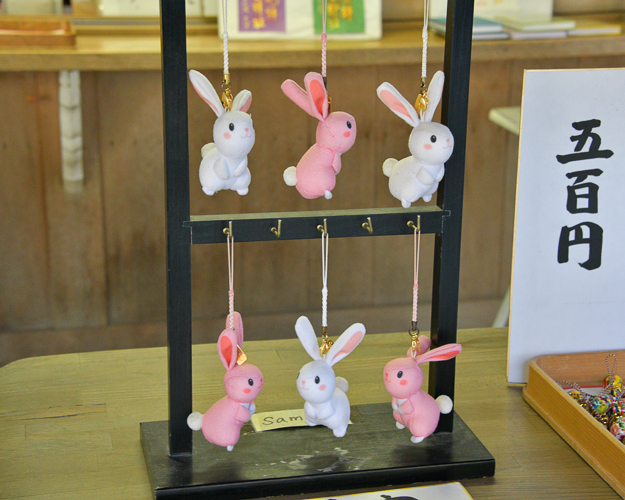
Omikuji
The rabbit is a popular symbol associated with the shrine and can be found on its omikuji or lucky charms. This Shinto shrine is dedicated to Ujinowaki Iratsuko-no-Mikoto, son of Emperor Ojin. According to the legend, he got lost on the way to Uji from Kawachi province. A divine messenger in the form of a rabbit called a “Mikaeri Usagi” (turning back rabbit) guided him back by hopping along a little way and then looking back as if to say, “Follow me,” before hopping on a little further.

The water spout for the Ujigami Shrine that fills the Chozuya. Chozuya or temizu-ya are found in front of every Japanese shrine. Here you purify your hands and mouth before entering the shrine proper.
Uji is a little under an hour by train from Kyoto, and is worth the day trip.